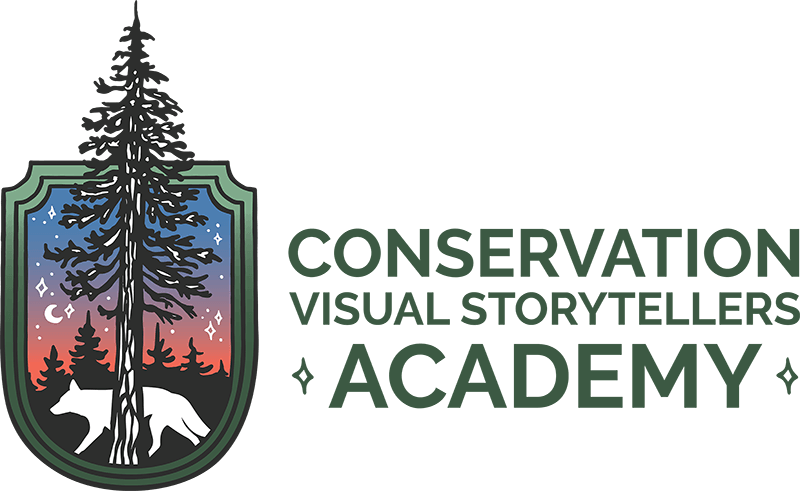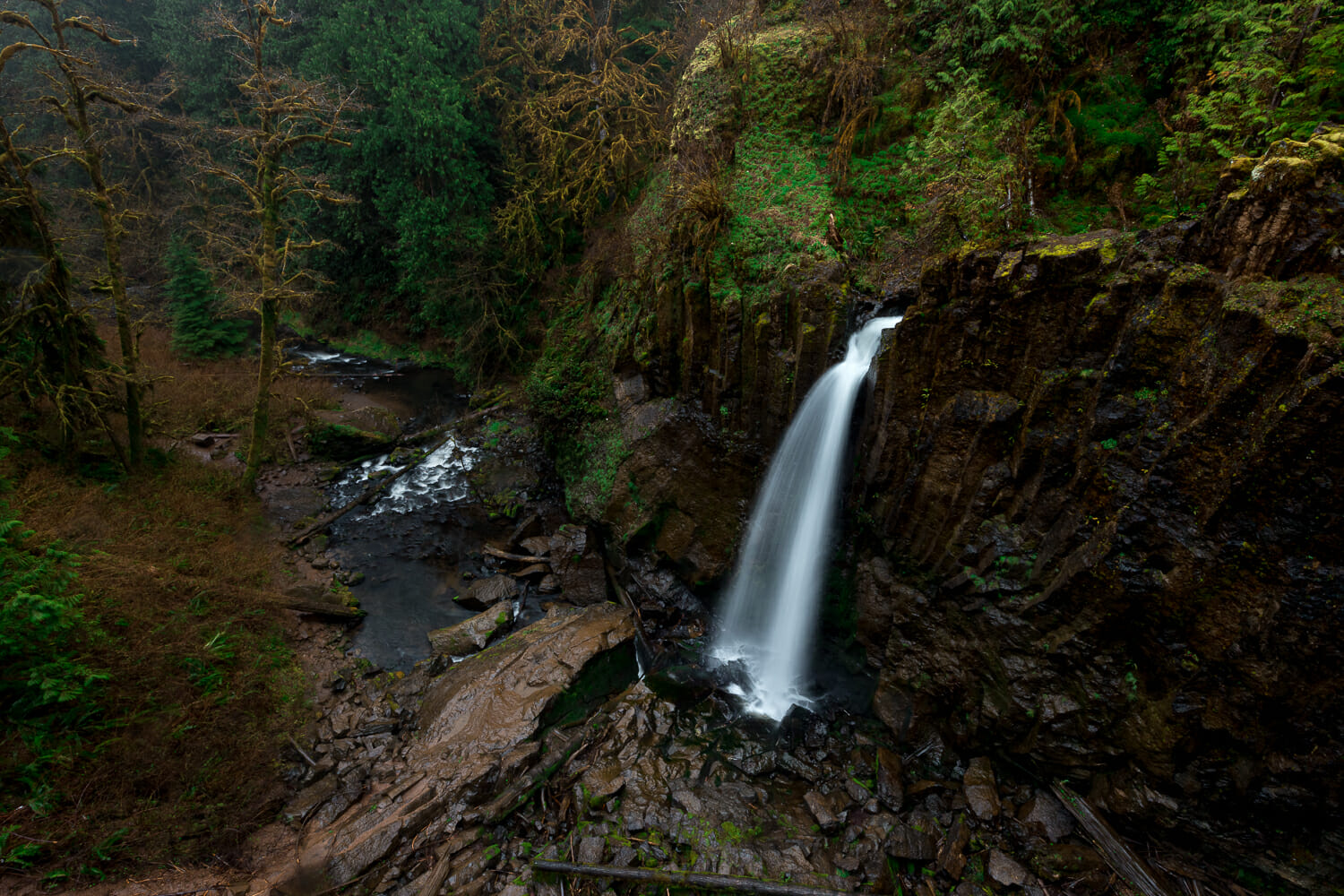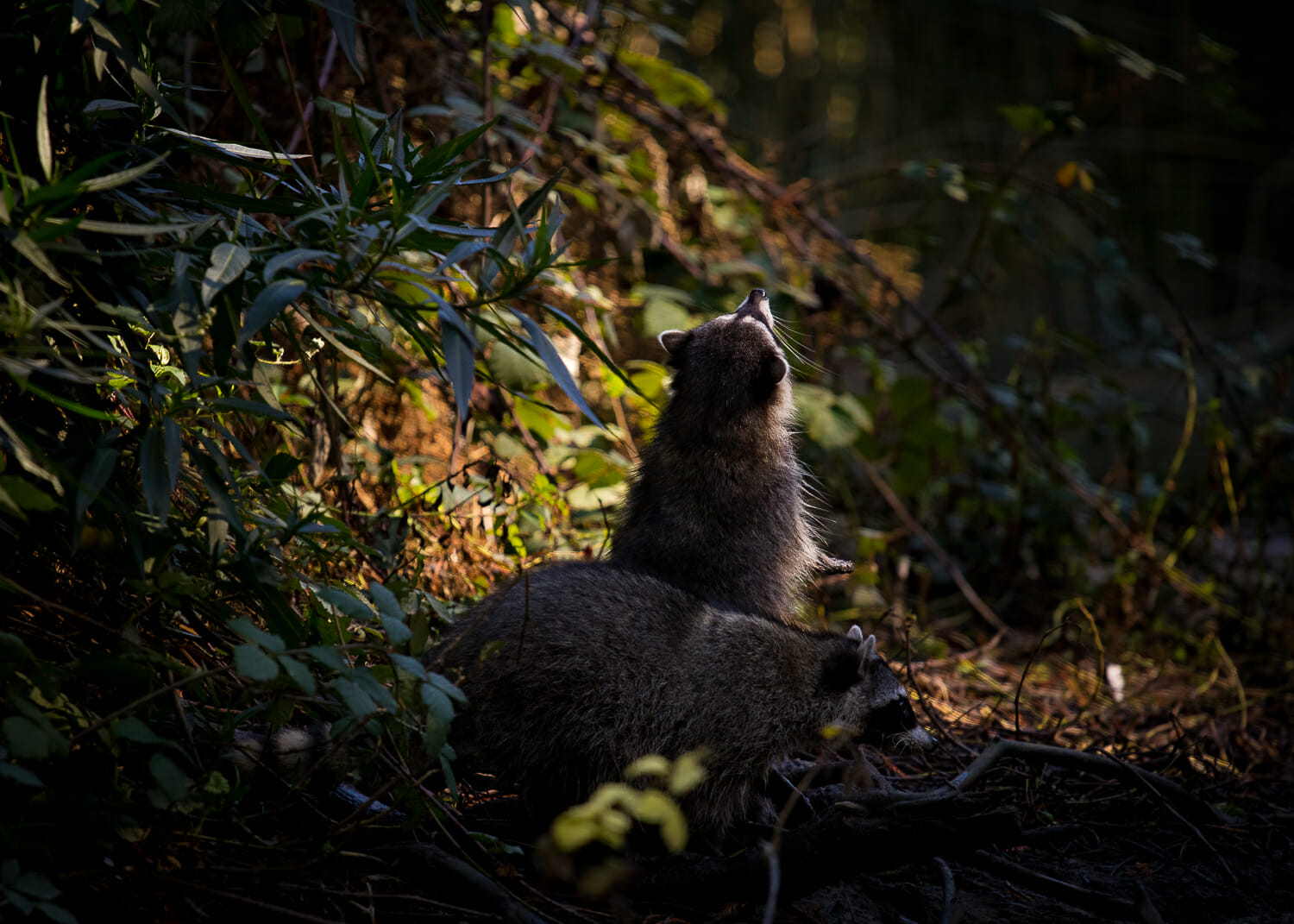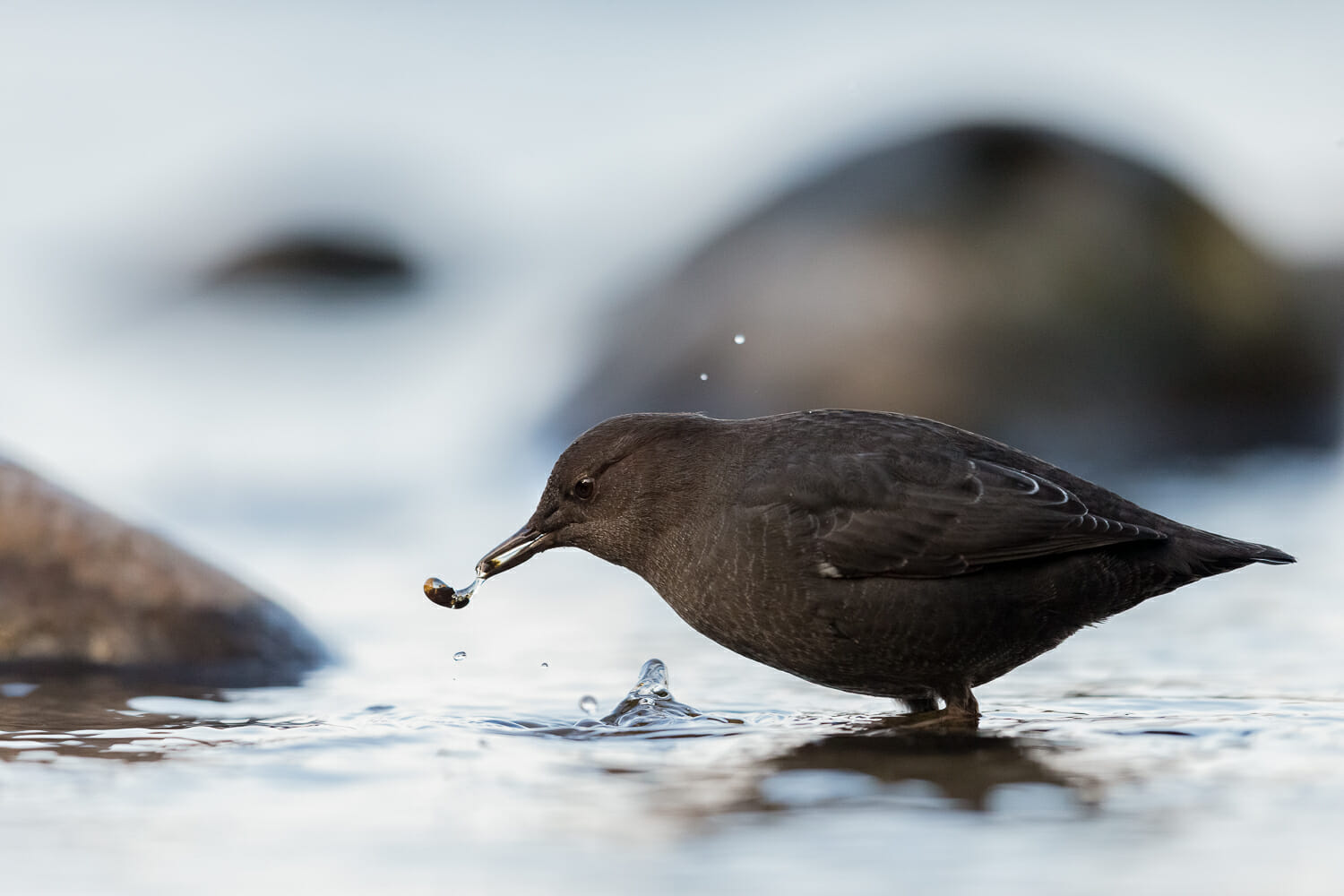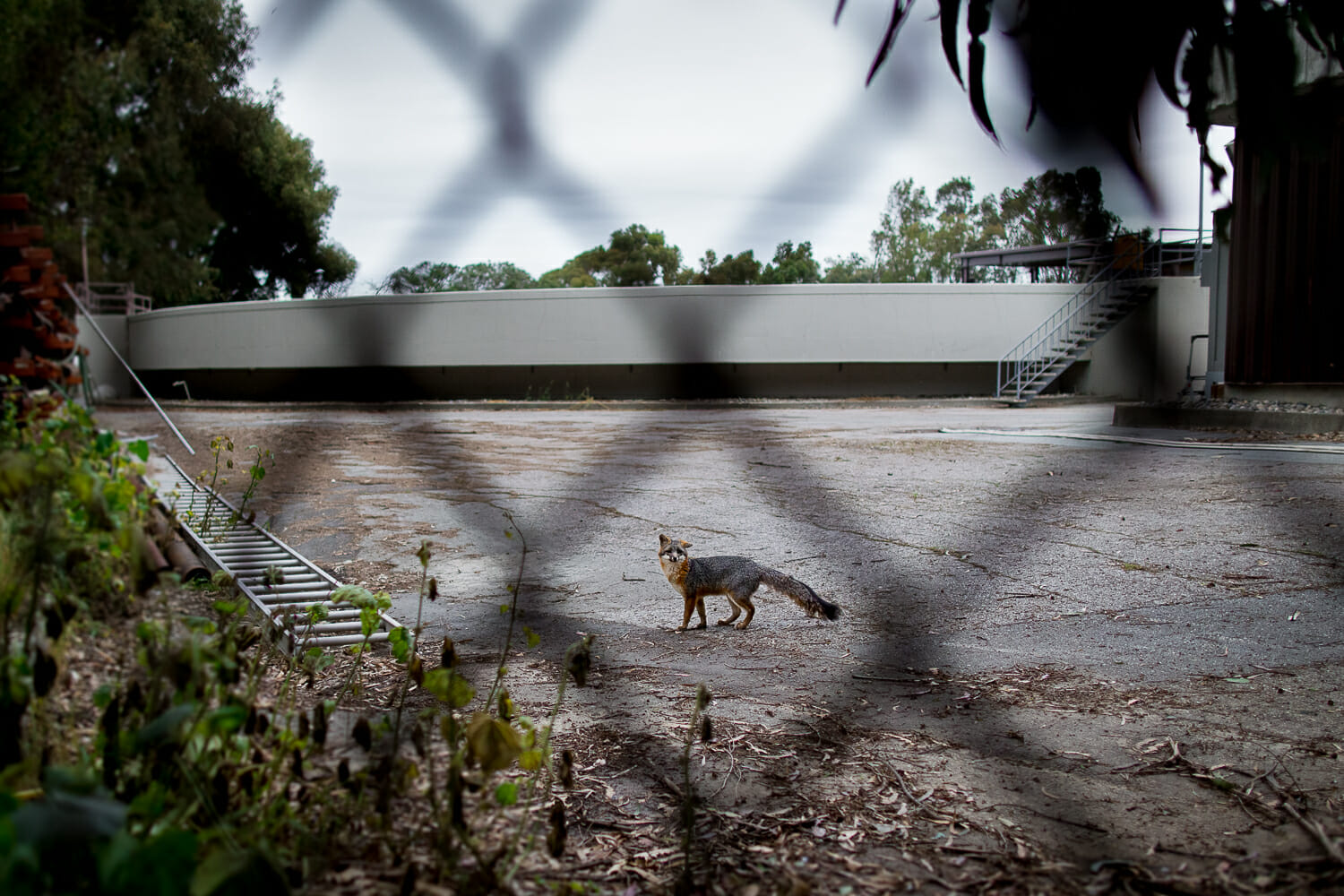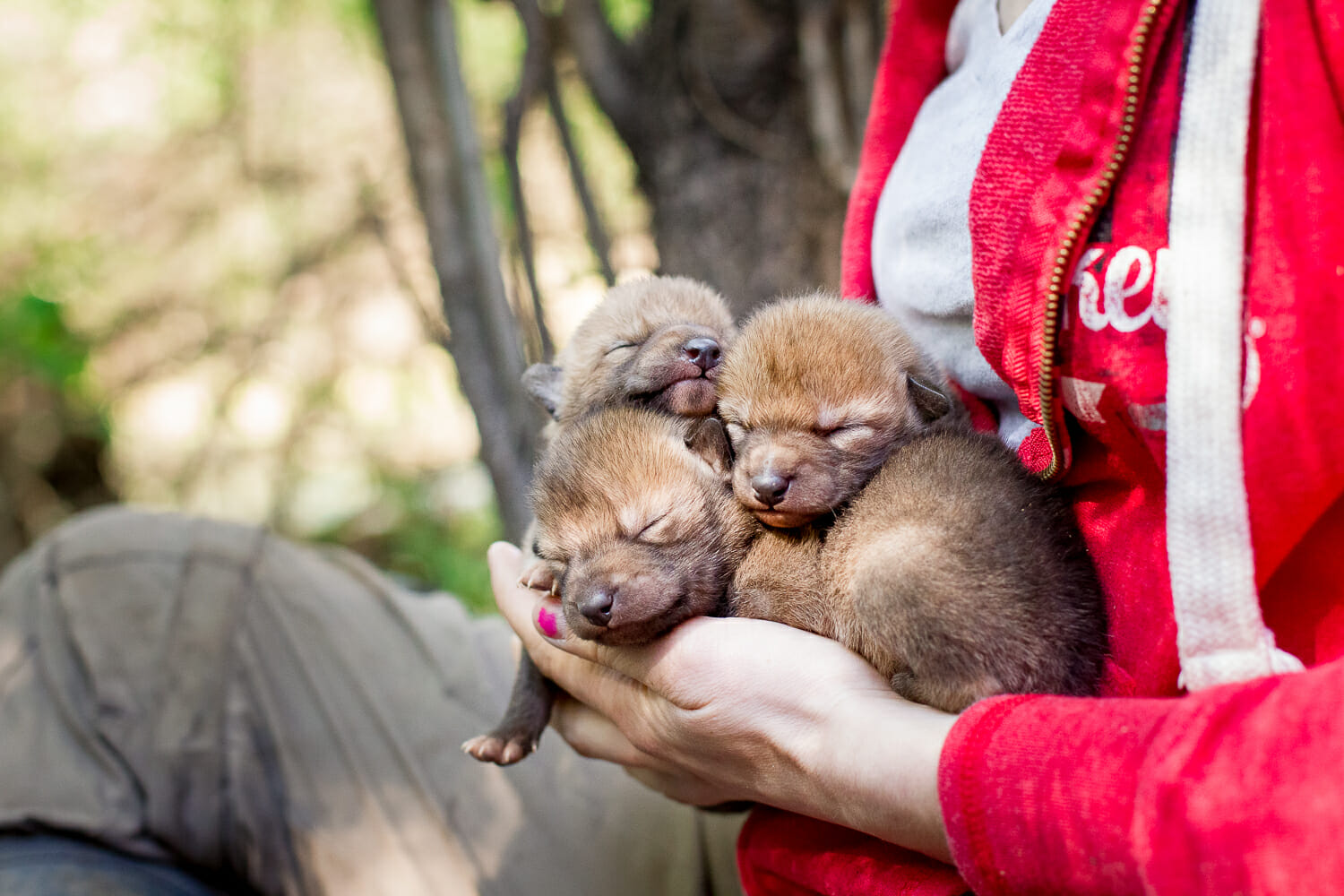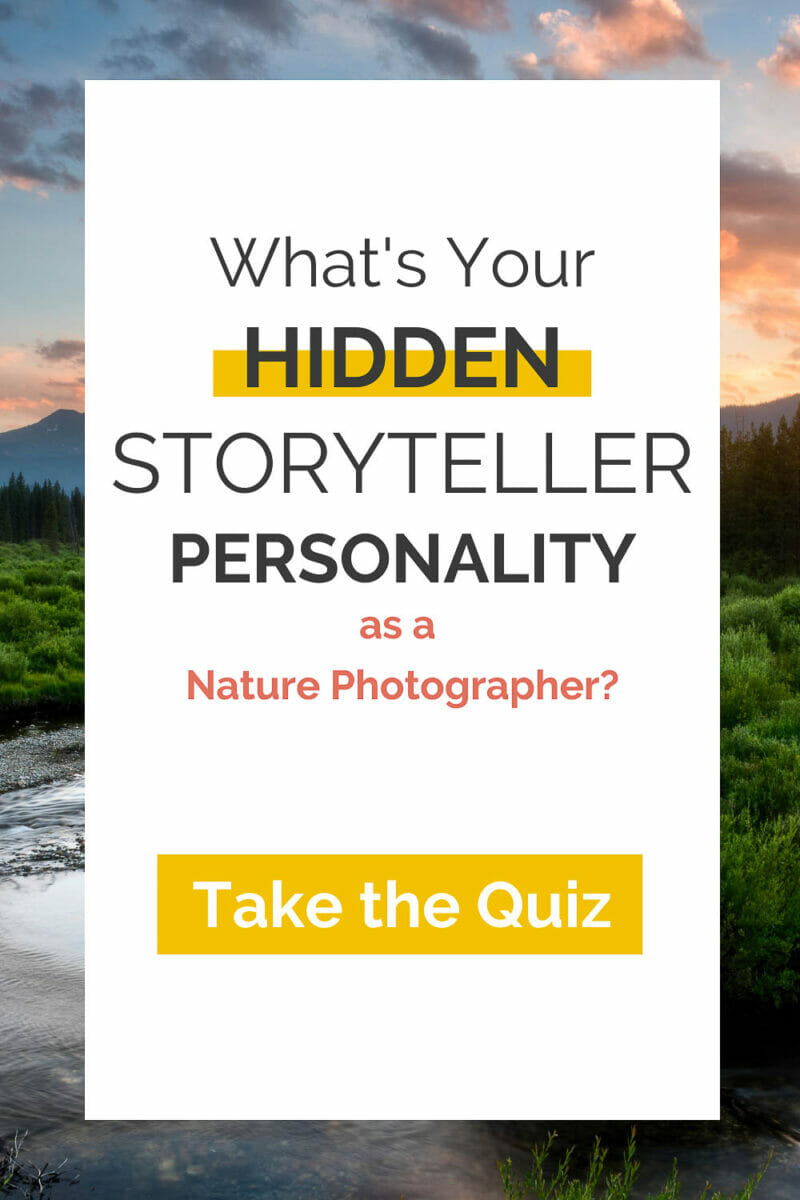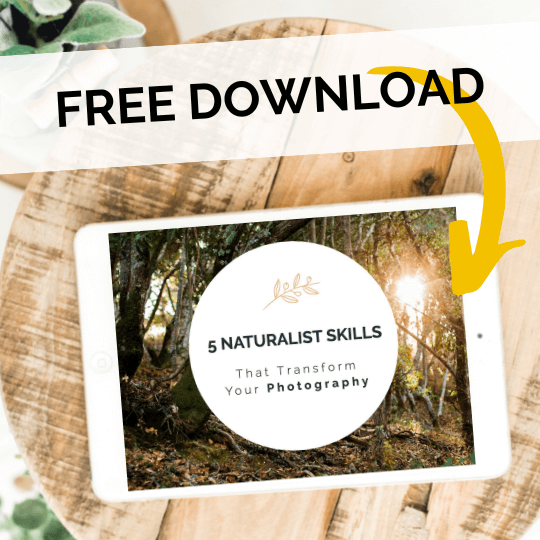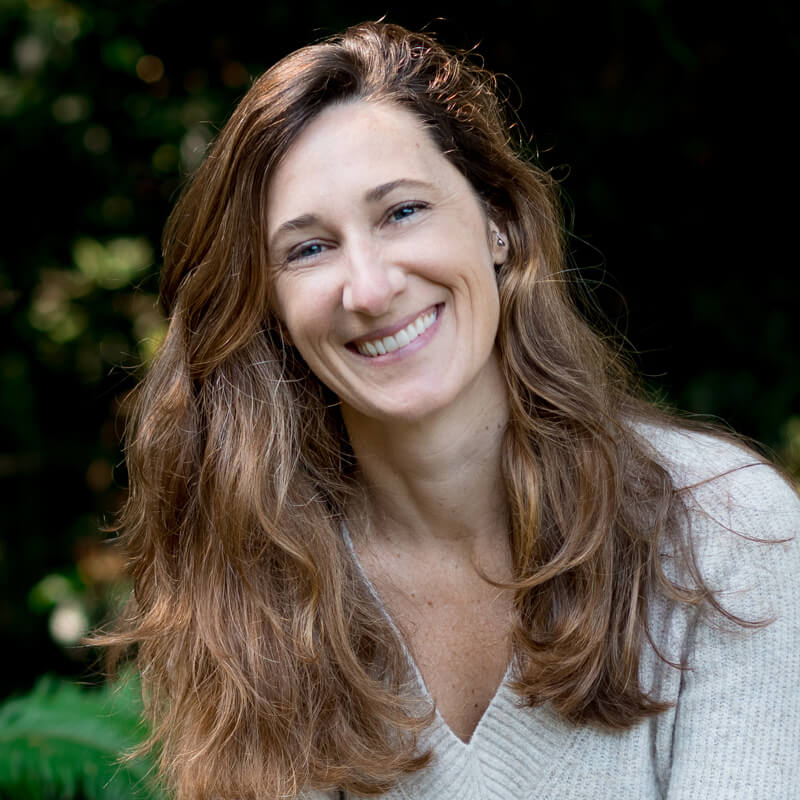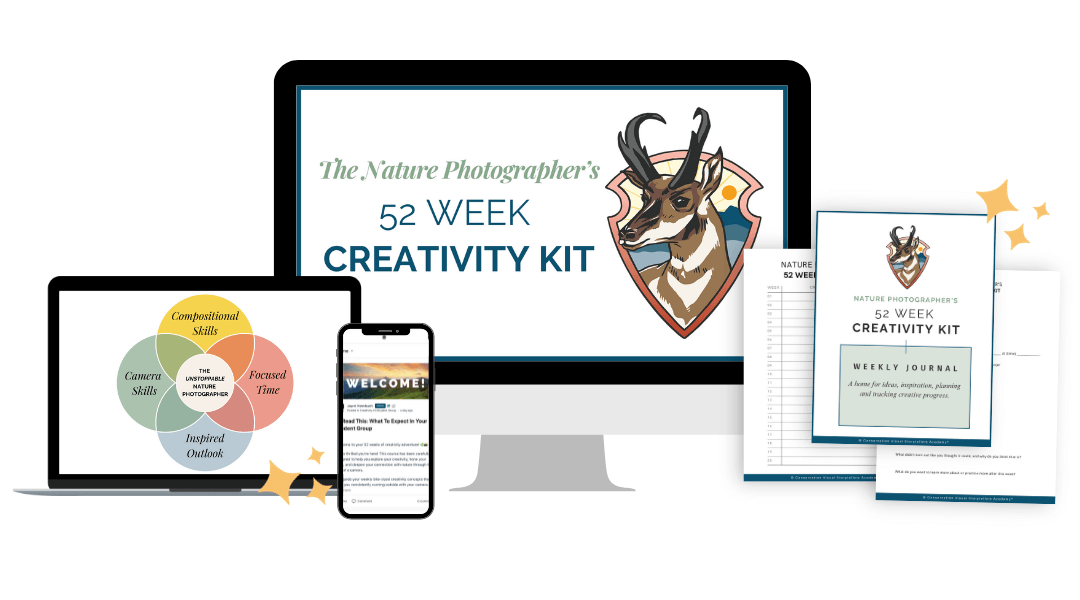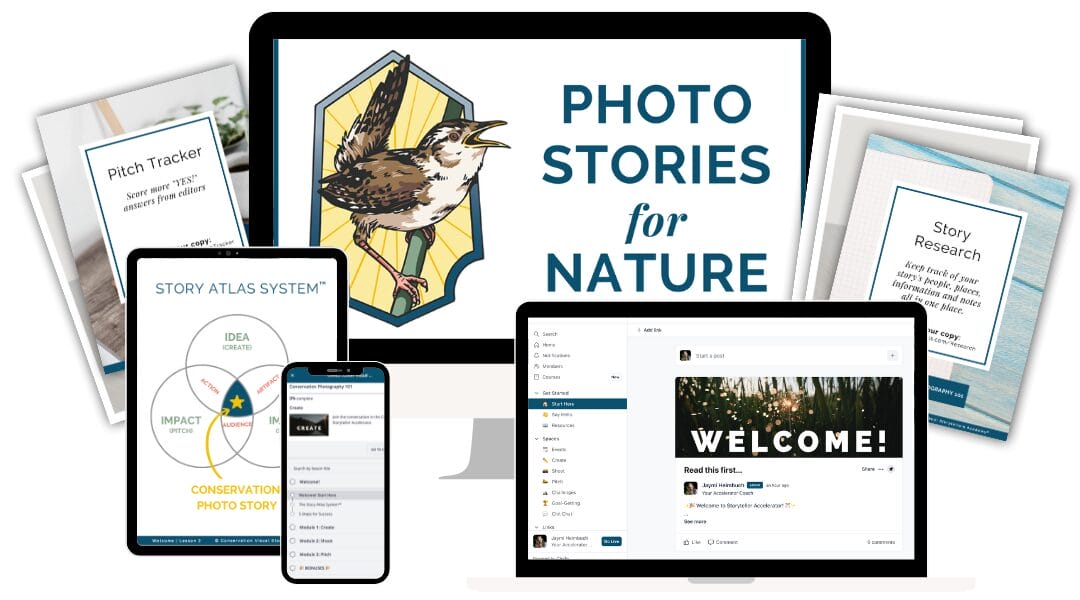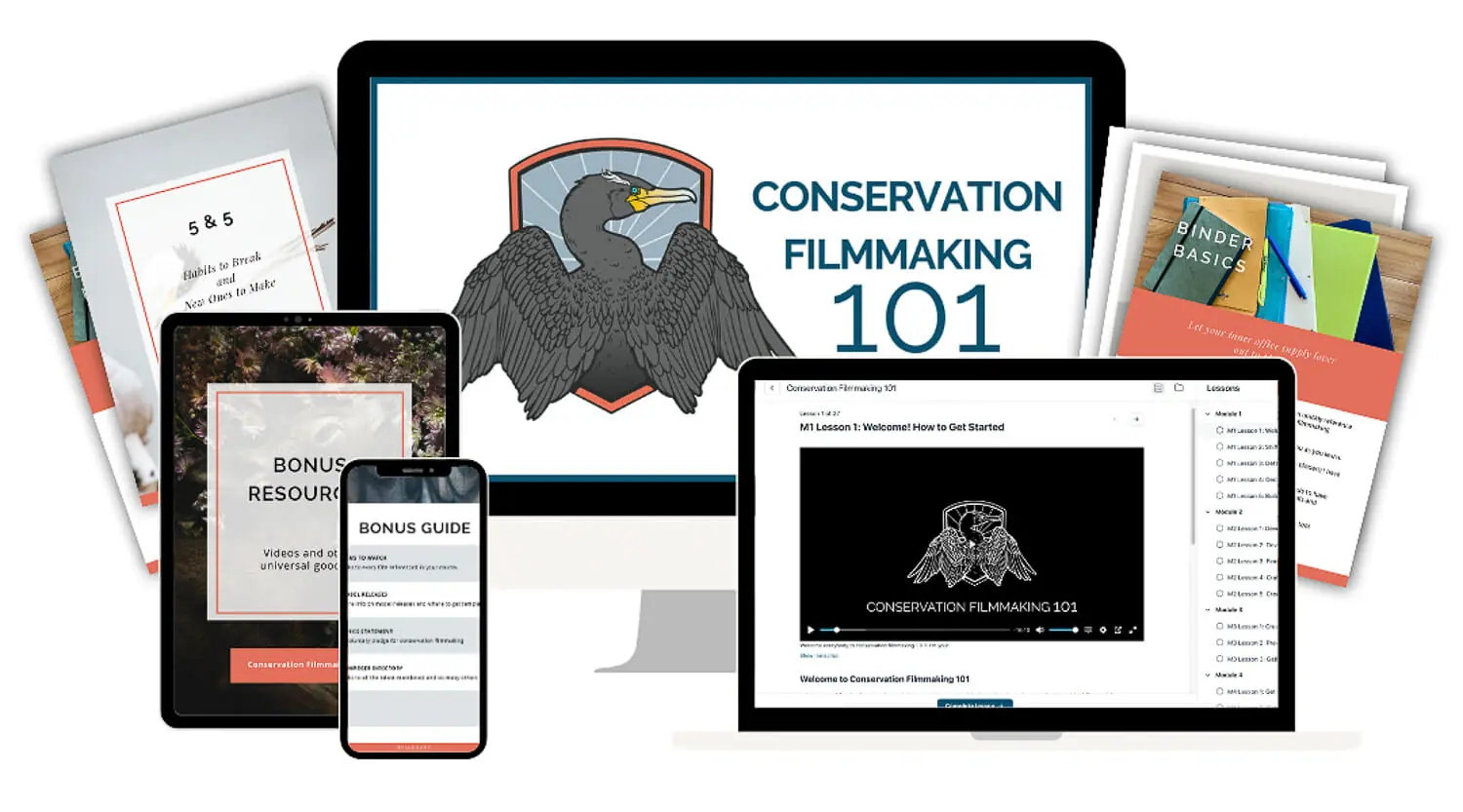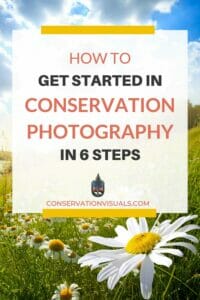Read Time: 8 minutes
You love snapping photos of the natural world, and you want to be a part of protecting the world that you love.
Combine the two, and you have conservation photography, a powerful tool to raise awareness and inspire action on environmental issues.
But what if you're just a budding conservation photographer – or even a still a conservation photographer seed(!) – and need to know to get started? That's what we'll be addressing in this post.
We'll explore the step-by-step path to becoming a conservation photographer, including my top tips, and answer all your questions.
Whether you're just getting started or looking to turn your existing work towards environmental conservation, these steps will help you get going.
So, grab your camera, get ready for some inspired shooting, and let's dive in!
1. Find your WHY
There is one question that every conservation photographer needs to ask themselves and spend some quality time answering: Why are you passionate about conservation? What do you hope to accomplish with your photography?
For some, it may be the desire to raise awareness about endangered species. For others, it may be the hope of protecting a natural area in their community, but small-scale, large-scale, and everything in between, the ultimate goal is inspiring others to take action for the planet.
Finding your “why” is crucial to creating impactful and meaningful work.
As a conservation photographer, focusing on causes that matter most to you is essential. This focus allows you to channel your passion, skills, and knowledge into an area that excites you. It stimulates the creation of authentic, resonating photography that has the potential to make meaningful change through work that has a unique voice that stands out.
By having a strong sense of purpose guiding you, you can approach photography with confidence and create work that has true significance and impact on the world.
Recommended: Check out episode 55 on the Impact podcast Why You Must Find Your Why for more about the power of zeroing in on your purpose and how it improves your creative stamina.
Your WHY is a powerful tool to help you grow immensely on your journey of conservation visual storytelling. It becomes a compass and a coach. It gives you purpose and focus, but it also gives you the courage to persevere when things get hard. So take some time to reflect and delve deeper into your motivation behind conservation photography.
Find your “why” and watch as the possibilities come alive!
(Additionally, demonstrating genuine passion attracts like-minded people and organizations to your work, improves your reputation within the industry, and enhances the chances for long-lasting partnerships. This all builds a strong foundation for a networking system that can maximize the impact of your work as a conservation photographer. But, more on the importance of networking later.)
Your “why” becomes a driving force in your photography, helping you to identify the projects you love the most. Spending time on this part of the process makes everything else a whole lot easier!
2. Plan a local photography project
Once you've dug deep to determine what's driving you, begin looking for local conservation issues that resonate with you.
Have you ever taken the time to research conservation issues in your local area? Now is the perfect opportunity to do so! Think about the issues that really matter to you. What are the issues that really hit home?
And when I say “home,” I mean it… literally!
Take a look in your backyard, or front yard, or side yard, or nearby greenspace.
What's going on locally that gets you excited about conservation?
In choosing a local conservation issue as your first project, you will be helping the environment and joining a community of individuals who share your passion for conservation.
Whether cleaning up a local park or advocating for protecting a nearby wildlife habitat, there are countless ways to get involved.
Reach out to local organizations or fellow conservationists for guidance, inspiration, or support. What issues are they focused on addressing? Dig in for more information on those topics.
Look through books by local authors, news articles, and scientific studies in your area, or connect with a local university to see what projects their students and researchers are working on.
(Don't worry. If you're still stumped, we have your back. The next chapter in our guide is a whole pile of photo project ideas!)
When you've identified a local issue to document through your conservation photography, it's time to start planning and preparing to capture your vision through photography!
If you're relatively new to conservation photography, consider taking on a small-scale conservation photography project to dip your toes into the field.
This could involve photographing wildlife, documenting land preservation efforts, or supporting an environmental organization's existing projects.
Whether you're an experienced photographer or just starting, proper planning is essential to ensuring your project runs smoothly and the result is everything you envisioned.
To ensure the success of your project:
- Consider the critical factors that go into storytelling through photos, including establishing a clear vision for your project and developing a plan to capture compelling images.
- Start by outlining your goals and objectives for the project, including any specific shots or angles you want to capture.
- Consider the location and lighting, and list any necessary equipment needed, which will help you figure out timing and a budget.
With a little bit of preparation, you'll be ready to bring your project to life through your camera's lens. Grab your notebook, and let's get started!
Recommended: Projects can yeild lots of individual photo stories. If you're interested in trying your hand at making photo stories and want ideas to get started, check out episode 58 on the Impact podcast: 3 Types of Conservation Photo Stories You Can Photograph Near Home
Look locally for photography ideas. There are impactful, important photo stories hiding around every corner. Don't overlook common sights. In fact, “common” species might end up being the perfect place to start practicing your visual storytelling skills.
3. Start snapping shots!
Ready to start capturing the natural world through a camera lens? Don't worry if you're a beginner – it's all about trial and error and finding your unique style.
To get started, it's essential to secure the right equipment. A camera, memory cards, and spare batteries are a must but also consider investing in a tripod and varying lenses.
Once you have your equipment, take your time to learn about the different camera settings, such as aperture, shutter speed, and ISO.
Don't be afraid to experiment and try new things.
Experiment with different angles, lighting, and subjects to discover what works for you. Whether you're new at this or a seasoned photographer, continuously exploring the basics of photography is crucial to bringing your photo story to life.
Exploring your style and following an artistic vision can feel like an elusive goal, but if you embrace the journey and keep pushing ahead, you'll be amazed at the stunning images you can capture.
If you want to sharpen your conservation photography skills, embrace experimentation and challenge yourself whenever possible. It's the key to creating impactful work that stands out from the crowd.
Remember, there's no such thing as “failure”, just learning experience. So get out and PLAY!
Recommended: Ready to push your skills and creative thinking? Check out our course, The Nature Photographer's 52 Week Creativity Kit.
Once you notice yourself taking the same types of photos over and over, it's time to dive deeper and refine your skills. Push yourself to go past snapshots and into crafting visual stories about the places, species and issues you're focused on.
4. Refine your photography skills
As you progress through your project, continue honing and developing your skills.
There's always something new to discover about cameras, lighting, composition, and editing techniques that can help you take better photos.
Keep your camera handy and practice shooting in different lighting conditions and environments to challenge yourself and grow your skills.
Don't be afraid to experiment and make mistakes; they can be valuable learning experiences.
It's not just about the images, though.
Remember, we call it visual storytelling for a reason.
Building strong storytelling skills is crucial for conveying the issue effectively.
This involves selecting meaningful images that evoke emotions and understanding, allowing you to use images to convey your message effectively.
If you need to build essential visual storytelling skills, don't panic! From online courses to books and articles, there are many resources available that can help you develop this valuable expertise.
If you're ready to take your visual storytelling game to the next level, start exploring these resources and investing in yourself. With a bit of practice and dedication, you'll be creating captivating visuals in no time!
And remember to share your work with others! Feedback from fellow photographers and the community can help you gain new perspectives and refine your approach.
As you move beyond stand-alone images and into photos that tell stories, consider what it is you want others to know about the topics you're photographing. What do you want them to understand, learn, or feel about the topic? Craft photos that draw that out in your viewers. This is the foundation of using photos for conservation impact.
5. Find opportunities to show your work
As a conservation photographer, sharing your projects with the world is incredibly rewarding and essential for making an impact.
Don't be afraid to take that leap of faith and get your photos out there; the world is waiting for your voice to be heard.
But how do you make sure that happens? Luckily, you can get your work into the world in many ways.
Exhibits
Consider exhibiting your work at cafes, libraries, or galleries. Not only will this help expose the issue you're addressing through your work to other concerned community members, but it's also a great way to connect with other artists and activists, as well as local organizations and businesses.
Cafes and libraries offer a more relaxed and casual atmosphere, while galleries can provide a more formal setting for your work to be displayed.
Don't be afraid to put yourself out there and share your work. It can be intimidating but go back to your “why” to help overcome your fears.
Remember, it's not about you necessarily; it's about inspiring others to take action.
Presentations
Presentations are an excellent way to showcase a conservation photographer's work and inspire action on environmental issues.
These can be held at various venues, including offices, schools, and community centers, and can be presented by you or by an organization you've partnered with.
When designing a presentation, be sure to showcase a range of images that capture the essence of the project and convey its importance, encouraging viewers to get involved and take action.
Social Media
Share your images across multiple platforms to reach as broad an audience as possible.
Craft captions and titles that evoke curiosity and respect for the subject matter and encourage viewers to take action.
Plus, social media allows you to connect with other photographers and enthusiasts, receive feedback on your work, and even gain inspiration for your future projects.
Don't forget to reach out to influencers that align with your values — they can help spread the word further and increase engagement with your project overall.
Publications
Publications are a powerful way for conservation photographers to promote their work and encourage action on environmental issues.
There are a multitude of publications out there, from magazines and newspapers to online platforms and books, and it can be overwhelming to know where to start.
Look for publications where you can see a potential connection between their readers and your story.
Pitch your story concisely, highlighting what makes your story unique and why it deserves coverage.
Consider targeting specific editors or writers who may be advocates for your cause or can offer you constructive feedback.
With persistence and a fresh perspective, you can find the perfect publication to showcase your stunning photographs and spread awareness on pressing environmental subjects.
And who knows? Your photos could be the ones that inspire and educate countless viewers.
There are infinite ways to get your work out into the world. The more opportunities you make for yourself, the more amazing people you'll meet – from other inspiring photographers to scientists, community leaders, and photo editors. And that is where momentum really starts to build!
6. Network, network, network
Networking is building connections is crucial when it comes to getting your message out there and expanding your reach.
Attend events, workshops, and conferences related to conservation or photography, where you can connect with other photographers, editors, and experts in the field.
Online platforms such as social media, environmental and photography websites can help you connect with a global audience.
Participating in charitable events and offering to speak at seminars or educational workshops related to conservation photography is also an excellent way to establish yourself and get your work seen.
By networking effectively, you can build relationships that enable you to share your work and positively impact the environment.
Keep in mind that networking is not just about meeting new people but also about nurturing those connections. Use your network to your advantage and keep in touch with those you meet.
Building connections is also a great way to build a network of colleagues and possible story subjects who can provide insight and inspiration to help progress your project. By doing this, you can create an involving narrative that will resonate with audiences of all kinds.
Get out there, start building those connections, and get excited to network, collaborate, and reach out. You never know who can help you down the line.
Time to get started!
Conservation photography is a powerful way to use your creativity and insight to bring attention to the causes that you are passionate about.
Every little bit counts when it comes to protecting our planet, so why not follow these steps and start your conservation photography journey today?
Let's work together to ensure that future generations can enjoy the beauty and diversity of our natural world.
